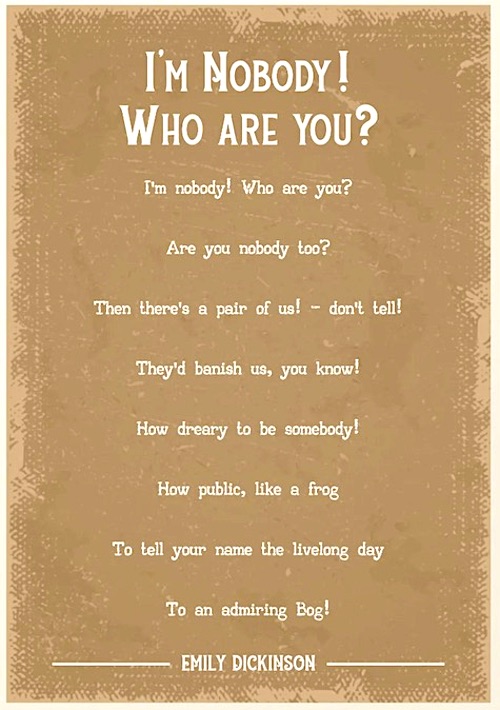Teach Social & Emotional Skills through Poetry
By Kasey Short
 Poetry has the power to convey complex emotions and experiences through concise and powerful language, making it a versatile tool for teaching and practicing social and emotional skills.
Poetry has the power to convey complex emotions and experiences through concise and powerful language, making it a versatile tool for teaching and practicing social and emotional skills.
Many poems are accessible for free online, providing teachers and students easy access to a variety of poetry without additional cost to schools and families.
Poetry to Identify and Understand Emotions
Poems often distill complex emotions and experiences into a few lines; additionally, the use of metaphors, similes, and other literary devices in poetry can help readers to understand the nuance of complex thoughts and feelings.
Learning to identify and name the emotions in poetry and sharing their own emotions through writing poems helps students practice identifying what they are feeling and helps them to better understand their own emotions as well as the emotions of others.
Poetry analysis
Have students read and analyze a poem, identifying the emotions and themes present in the poem. This can help them understand how poets use language to convey emotions and ideas. The following questions can be used to help students analyze the poem for emotions.
1. How does the poem make you feel? Explain why using examples from the poem.
2. How do you think the speaker of the poem feels? How did the author convey this?
3. Do the speaker’s emotions change in the poem?
4. How are literary devices used in the poem to contribute to emotion in the poem?
5. How does the structure of the poem contribute to the emotional impact of the poem?

Poetry can also help individuals to process difficult emotions and experiences, providing an outlet for authentic self-expression and healing.
1. Think about how you are feeling and write a poem that showcases that feeling.
2. Have you ever had a difficult time telling someone how you feel? Write a poem that expresses that emotion.
3. What is an emotion you would like to convey to a larger audience? Write a poem that conveys that emotion.
4. Choose 5 of the following emotions then complete the following steps: Content, Overwhelmed, Anxious, Scared, Joyful, Lonely, Disappointed, Annoyed, Inspired, Betrayed, Guilty, Courageous, Jealous, Empowered, Calm, Excited.
a. List different times that you have felt the specific emotions.
b. List words that you connect to each emotion.
c. Brainstorm similes and metaphors that connect to each emotion.
d. Write a poem that conveys one or more of the emotions in your life.
Developing Communication Skills
Poetry can help students develop communication skills by providing a platform for creative expression and dialogue. By sharing and discussing their own poems and analyzing the poems of others, students can learn how to articulate their thoughts and feelings effectively and respectfully.
Poetry circle: Students bring in a poem they have written and share it with the class. Encourage students to ask each other questions and provide feedback in a respectful and constructive manner. Or students might bring in a published poem they connect with and share it with the class. Encourage students to ask questions and communicate their own ideas about the poem. This activity can help students practice active listening, critical thinking, and effective communication.
Group Poems: Divide students into small groups and have them write a poem together that includes something important to each of them. Then each group shares their poem and collaborative process with the class.

Poetry Poster Sessions: Assign students to create a poster that analyzes a particular poem or poet. Have students present their posters to the class and engage in a discussion about the poem’s themes and emotional impact.
Poetry podcast: Have students work in small groups to create a podcast episode that discusses a particular theme, poem, or poet. Encourage students to practice their interviewing and public speaking skills, as well as their ability to listen actively and respond thoughtfully.
Developing Empathy and Understanding
Poetry can help students develop empathy and understanding by providing a window into the experiences and perspectives of others. Reading and discussing poems about different topics and experiences can help students understand and relate to the perspectives of people who are different.
Examining perspectives: Students read and analyze poems that explore different perspectives and experiences, such as those written by poets from different cultural backgrounds, genders, or generations. Encourage students to discuss the emotions and ideas conveyed in the poems, as well as the historical, social, or political contexts that may have influenced the poets’ perspectives.
Character analysis: Students read and analyze poems that explore the emotions and perspectives of characters or personas, such as those written in the first person or in a character’s voice.
Encourage students to discuss how the poems help them understand the character’s motivations, feelings, and conflicts, as well as how the poems relate to their own experiences. This activity can help students develop their analytical and critical thinking skills, as well as their ability to empathize with fictional or real-life characters.
Poetry for change: Students research and analyze poems that have been used as tools for social change and activism. Discuss the role of poetry in promoting social change and students write their own poem that addresses a contemporary social issue that are interested in.
Example Poems
“So Much Happiness” by Naomi Shihab Nye
“I Wandered Lonely as a Cloud” by William Wordsworth
“Sonnet 18” by William Shakespeare
“When I Grow Up I Want to Be a List of Further Possibilities” by Chen Chen
“The Hill We Climb” & “New Day’s Lyric” by Amanda Gorman
“Hope is the Thing with Feathers” by Emily Dickinson
“The Last Time” by Ada Limón
“Explaining My Depression to My Mother” by Sabrina Benaim
“I Know Why the Caged Bird Sings” by Maya Angelou
“When people say, ‘we have made it through worse before’” by Clint Smith
“Solitude” by Ella Wheeler Wilcox
“I Don’t Want to Be a Spice Store” by Christian Wiman
“Speaking Tree” by Joy Harjo
“Winter Poem” by Nikki Giovanni
Many of these poems can be found at poets.org from the Academy of American poets, the Poetry Society of America and the Poetry Foundation.
See more of Kasey’s ideas for teaching poetry at
Novels in Verse! The Why, Which and How.
Dickinson poster credit: TDSPrints/Etsy
Kasey Short (@shortisweet3) is the Middle School Director of Studies and an 8th Grade English Teacher and Advisor at Charlotte (NC) Country Day School. Kasey loves to share ideas from her classroom and writes frequently for MiddleWeb. She attended the University of North Carolina at Chapel Hill and earned a bachelor of arts in middle school education with a concentration in English and history. She went on to earn a master’s in curriculum and instruction from Winthrop University.



































